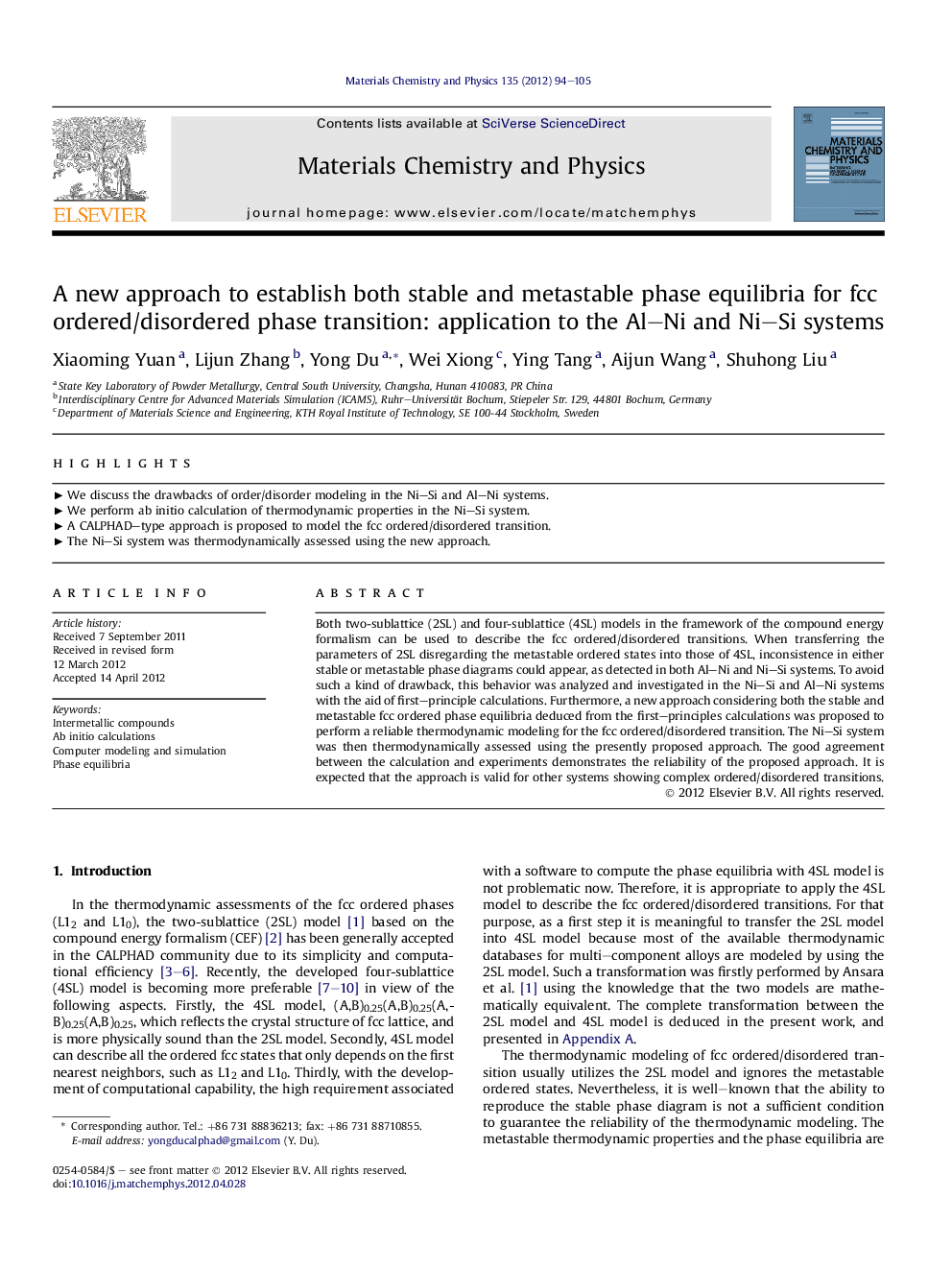| کد مقاله | کد نشریه | سال انتشار | مقاله انگلیسی | نسخه تمام متن |
|---|---|---|---|---|
| 1523418 | 995324 | 2012 | 12 صفحه PDF | دانلود رایگان |

Both two-sublattice (2SL) and four-sublattice (4SL) models in the framework of the compound energy formalism can be used to describe the fcc ordered/disordered transitions. When transferring the parameters of 2SL disregarding the metastable ordered states into those of 4SL, inconsistence in either stable or metastable phase diagrams could appear, as detected in both Al–Ni and Ni–Si systems. To avoid such a kind of drawback, this behavior was analyzed and investigated in the Ni–Si and Al–Ni systems with the aid of first–principle calculations. Furthermore, a new approach considering both the stable and metastable fcc ordered phase equilibria deduced from the first–principles calculations was proposed to perform a reliable thermodynamic modeling for the fcc ordered/disordered transition. The Ni–Si system was then thermodynamically assessed using the presently proposed approach. The good agreement between the calculation and experiments demonstrates the reliability of the proposed approach. It is expected that the approach is valid for other systems showing complex ordered/disordered transitions.
► We discuss the drawbacks of order/disorder modeling in the Ni–Si and Al–Ni systems.
► We perform ab initio calculation of thermodynamic properties in the Ni–Si system.
► A CALPHAD–type approach is proposed to model the fcc ordered/disordered transition.
► The Ni–Si system was thermodynamically assessed using the new approach.
Journal: Materials Chemistry and Physics - Volume 135, Issue 1, 16 July 2012, Pages 94–105